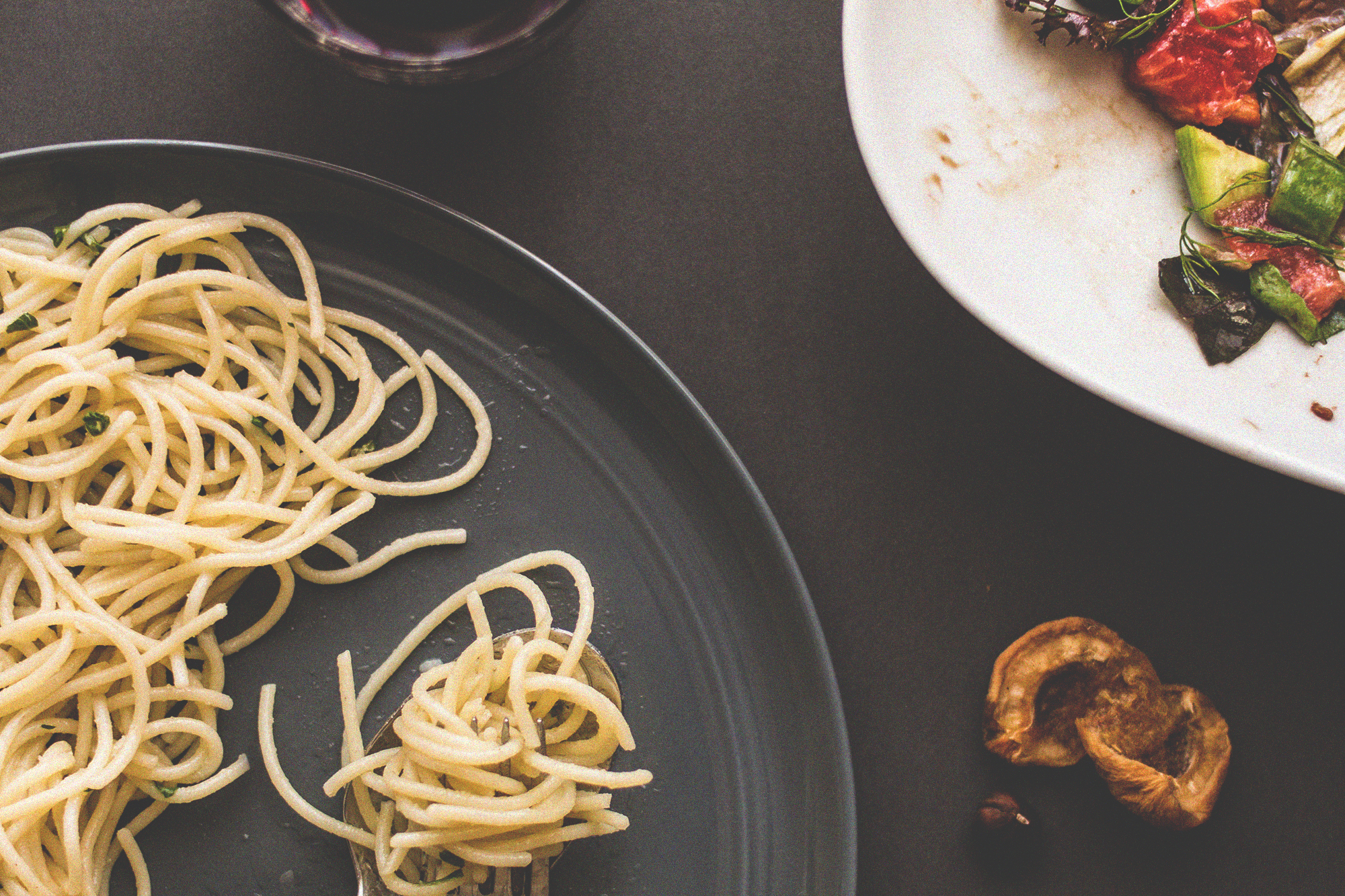Years of yo-yo dieting and emotional eating makes it difficult to hear your body’s hunger and fullness signals. Here are a few tips to learn how to eat when you’re hungry, and stop when you’re full.
BY: RACHAEL HARTLEY, RD, LD, CDE
Most people have a bit of diet advice they heard as a teenager that they still attempt to follow as adults. I’m no different. Luckily, the advice that sticks out to me didn’t come from a fad diet, although it did come from a celebrity interview in a teenage magazine…not exactly a reliable source. Despite that, it has stood the test of time, and a nutrition degree.
In an interview with Natalie Portman, she was asked how she stays in shape.
“I eat when I’m hungry. I stop eating when I’m full. That’s it.”
I was struck by its simplicity, practicality, and how it flew in the face of all the other messages telling me at the time that deprivation was the key. It’s a message I still practice today, and something I frequently share with others.
But what if you don’t know what hunger and fullness feels like? If you’re a chronic dieter, chances are, there have been times when you’ve ignored hunger signals and told yourself “Nope, the diet says I can’t!” Or conversely, there have been times you felt full, but kept eating, thinking “Well, I already screwed up, so I might as well eat it all while I can.”
Over time, these mixed messages can dull hunger and fullness cues. Emotions also make identifying hunger and fullness cues more complex than it would seem. Is that hunger, or is it boredom or sadness or anger or exhaustion?
Does all of this sound familiar? Here are a few ways to help you tune back into those natural hunger and fullness cues:
THE HUNGER SCALE
Extreme hunger and fullness are pretty easy to identify, but the subtle differences can be difficult. Of course, understanding the less extreme shifts in hunger and fullness is important, since you want to steer clear of the extremes. To learn how these subtle shifts feel, start practicing the hunger scale:
- Before taking a bite of food, rank your hunger on a scale of 1-10, 1 being famished, 10 being post-Thanksgiving dinner stuffed.
- When you’ve eaten about half of your plate, rank your hunger again.
- Do the same immediately after eating and again 30 minutes after eating.
Over time, you’ll begin to notice the slight differences in hunger levels. You’ll also start to pick up on how much food it takes for you to feel satisfied for different levels of hunger.
PHYSICAL VS. EMOTIONAL
It can be difficult to identify when hunger is real, or when it is stemming from an emotion. Although hunger feels different for different people, there are common characteristics of physical and emotional hunger. When you think you feel hungry, run through these characteristics and see if you can identify which one it is:
- Physical hunger is usually felt in the stomach. You might notice an empty feeling or your stomach growling. Physical hunger grows gradually as time passes since your last meal or snack. Low energy, headaches and feeling moody (aka hangry) can be signs of severe hunger.
- Emotional hunger generally comes on rapidly, often immediately after a specific emotion. This hunger is usually for specific foods, like sweets or comfort foods. When emotionally hungry, it often occurs immediately after eating. It may feel like food isn’t satiating you and that you can’t get enough.
NON-HUNGER EATING CHECKLIST
The feeling of hunger is often induced by a trigger rather than true hunger. Understanding if your hunger is real, or simply a response to a specific trigger, help you decide if you want to eat or not. Before eating, run through this checklist of possible triggers to see if any fit. Here are some of the most common ones:
- Negative emotions: Are you eating to dull or distract from a negative emotion, such as depression, sadness, or anxiety?
- Positive emotions: Are you eating to enhance a positive emotion, such as joy, celebration, or pleasure?
- Smell: Are you eating because a food smells particularly good? Consider the fast food effect – sometimes food smells much better than it tastes.
- Visually appealing: Do you want it because it looks pretty?
- Social: Do you want to eat because someone else is eating it?
- Procrastination: Are you eating to avoid doing something else?
- Low energy: Are you eating for an energy boost? Practicing these strategies regularly makes it easier to tune into your body’s hunger and fullness cues. It takes time, but it is possible!
Adapted from the full article.
Rachael Hartley, RD, LD, CDE is a private practice dietitian, food enthusiast, and nutrition expert based in Columbia, SC. By guiding others to rediscover the joy of nourishment rather than deprivation, Rachael helps men and women alike improve their health and well-being through delicious whole food recipes and practical advice through intuitive eating.

